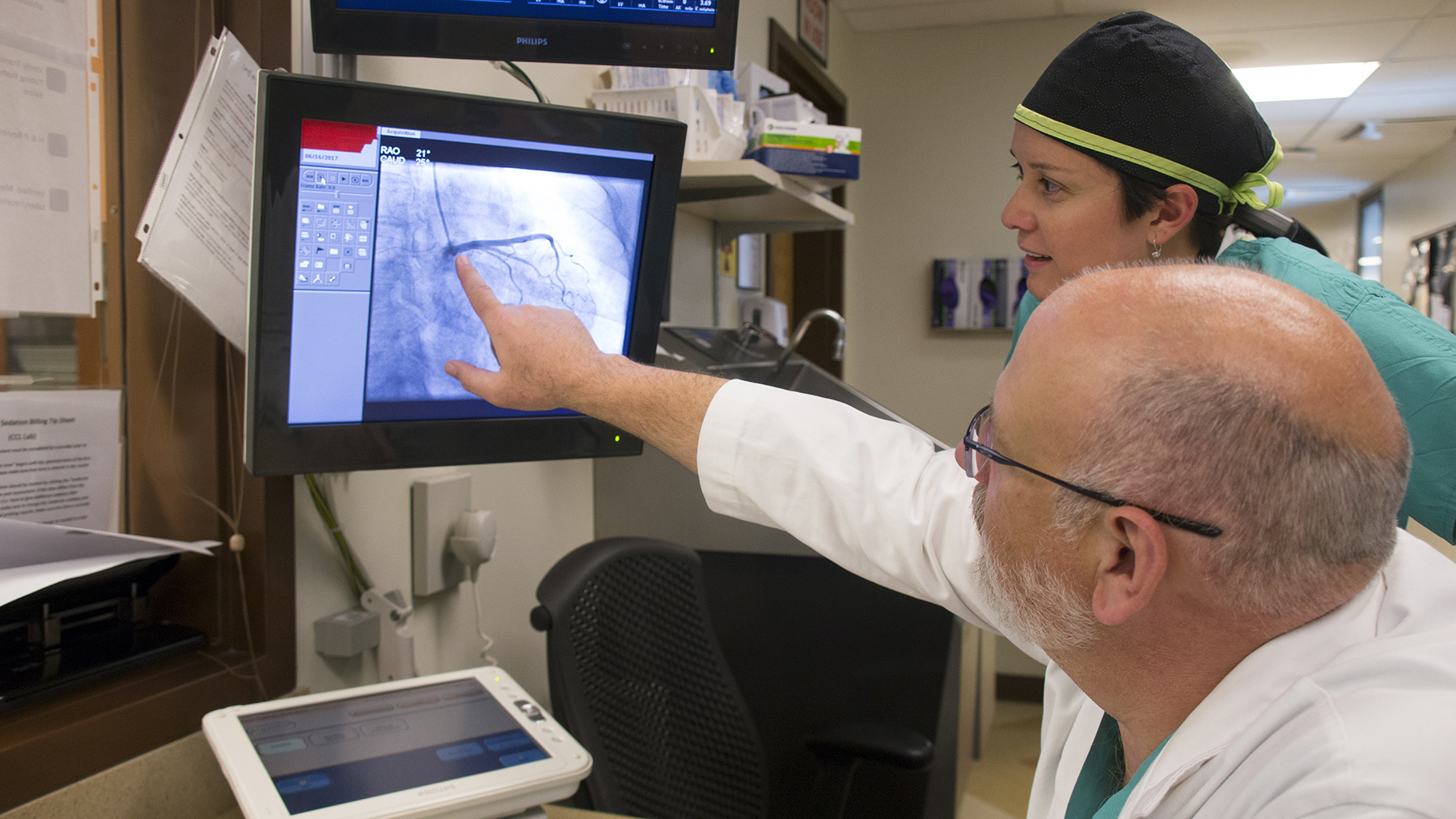Preparing for Disaster: UNM Hospital Participates in Region-Wide Emergency Training

Heart of the Matter
UNM Interventional Cardiologist Launches Transcatheter Aortic Valve Replacement Program
For decades, the best treatment for aortic stenosis – a narrowing of the aortic valve that deprives the heart of blood – has been an open surgery to insert a replacement valve, requiring the use of a heart-lung machine and prolonged recovery time.
But more recently, a minimally invasive procedure – transcatheter aortic valve replacement (TAVR) – has patients out of the hospital and back on their feet much sooner.
Interventional cardiologist Nestor Mercado, MD, PhD, medical director of The University of New Mexico Structural Heart Program, has been performing the procedure, which only requires a small incision in the groin, for the past six months.
“We feel it is a treatment that is greatly beneficial for our patients here at UNM,” says Mercado, who performs the procedure with cardiothoracic surgeon Daniel Maoz-Metzl, MD.

[TAVR is] pretty much the standard of care for the treatment of patients with aortic stenosis
“It’s pretty much the standard of care for the treatment of patients with aortic stenosis,” he says. “The outcomes are comparable if not better than open-heart surgery and the recovery is much faster. It includes a very short length of hospital stay.”
The procedure, which takes about an hour, involves threading a catheter through blood vessels to the heart, where the replacement valve is set into place. “It’s called a minimally invasive structural heart intervention,” Mercado says.
The first TAVR valves were introduced about 10 years ago, he says, adding that with a newer generation of devices, the approach has compiled a good safety record, and they now account for about 90 percent of U.S. aortic valve replacements.
“What we know right now is the device works well up to about 10 years of follow-up, which was the original cohort of patients in which the device was utilized,” Mercado says.
Aortic stenosis is more common in older people, affecting about 4 percent of people over the age of 75. With age, the leaflets in the aortic valve, normally pliable, slowly become calcified, says Jim Blankenship, MD, interim chief of the UNM Division of Cardiology, who likens it to a door with rusty hinges.
“It turns from a very mobile structure into a very rigid structure, like a rock,” he says. With less blood flowing through the heart, people experience a variety of symptoms, including chest pain and shortness of breath related to congestive heart failure. They are also more prone to fainting.
TAVR procedures are preferable for patients who are otherwise too sick to undergo open heart surgery, he says, adding that traditional open-heart surgery requires six months of recovery time to allow the breastbone to fully heal.
Because the new valve instantly restores normal blood flow to the heart, patients usually feel better as soon as they awaken from anesthesia following the procedure and are released from the hospital after overnight observation, says Cardiology program manager Judy Mondragon, RN.
“We encourage them to start walking,” says Mondragon, who recalls an elderly patient who passed out while taking his golf clubs out of his car and was eager to resume playing after undergoing TAVR. “He was out on the links in three weeks.”